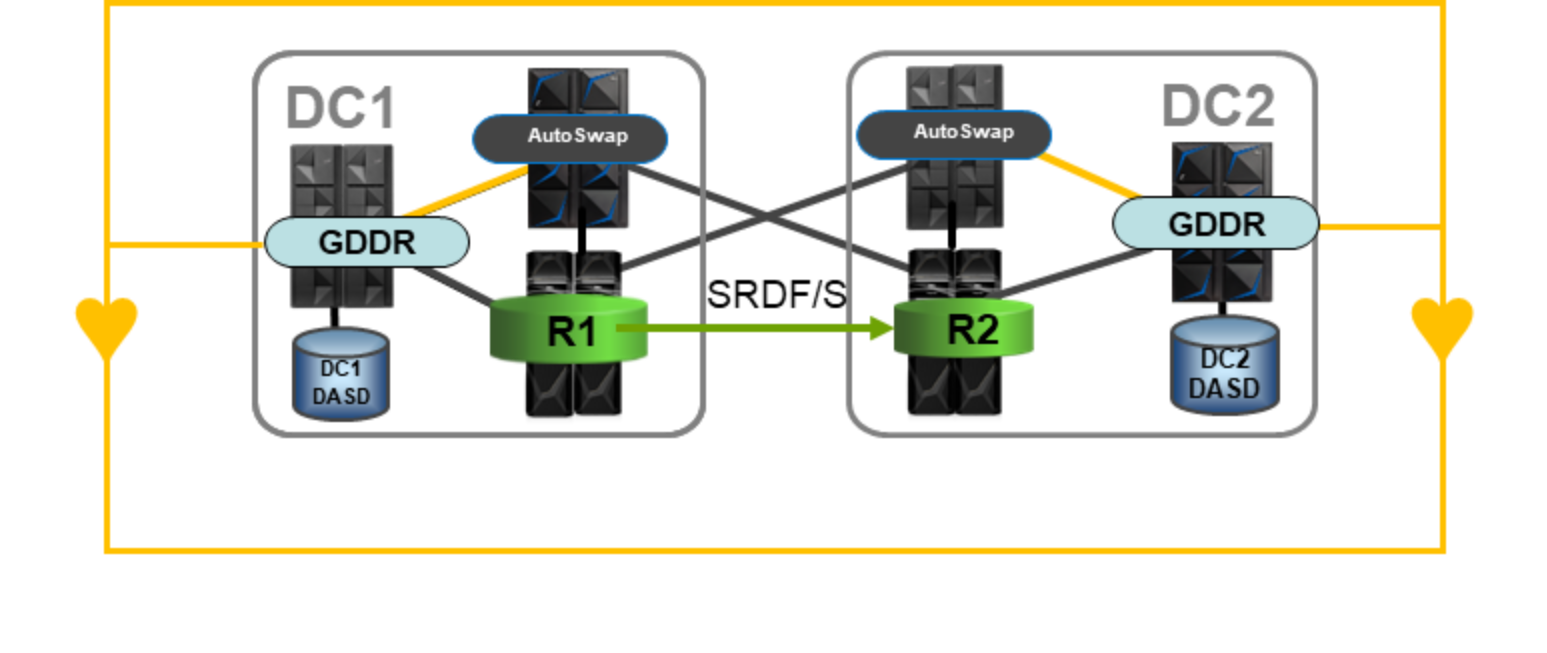Home > Storage > PowerMax and VMAX > Data Protection > Dell Technologies Geographically Dispersed Disaster Restart (GDDR) for PowerMax > SRDF/S with AutoSwap
SRDF/S with AutoSwap
-
In Figure 2, the two-site SRDF/S with AutoSwap configuration provides for near-continuous availability through device failover between DC1 and DC2. Figure 2 illustrates GDDR operation in the SRDF/S with AutoSwap environment.

Figure 2. GDDR SRDF/S with AutoSwap
In Figure 2, the relationship between the DC1 and DC2 sites is maintained through SRDF/S replication of primary disk images at DC1 to DC2. Both open systems (FBA) and mainframe (CKD) disk images can be replicated.
Figure 2 also shows the two GDDR C-Systems with their heartbeat communication paths, separate from the production disk and computer facilities. Each of the DC1 and DC2 production z/OS LPARs has AutoSwap and Consistency Group (ConGroup) software installed. AutoSwap provides for continuous IO operations in the event of an inability to access the primary (R1) array due to an array or site failure, while ConGroup ensures that the R2 arrays preserve a dependent write consistent image of the data in the event of an SRDF/S replication failure. In short, AutoSwap protects the FICON connections to the primary array (providing continuous data accessibility on the R2 array), while ConGroup protects the SRDF/S connections (preserving data integrity on the R2 arrays in the event of a ‘rolling outage’).
In this environment, GDDR can do the following:
- Manage planned site swaps
- Manage recovery after unplanned site swaps
- Perform standard operational tasks:
- IPL, system reset, activate, deactivate
- Trigger stop/start of business workloads
- Actively monitor for unplanned/failure events
- Sites
- Systems
- Loss of SRDF/S
- ConGroup trip
- Inter-site communication failure
- AutoSwap events
- Configure/reconfigure Couple datasets
- Inter-site communication failure
- Manage coupling facilities policies
- Provide Cyber Recovery from either site or from both sites
